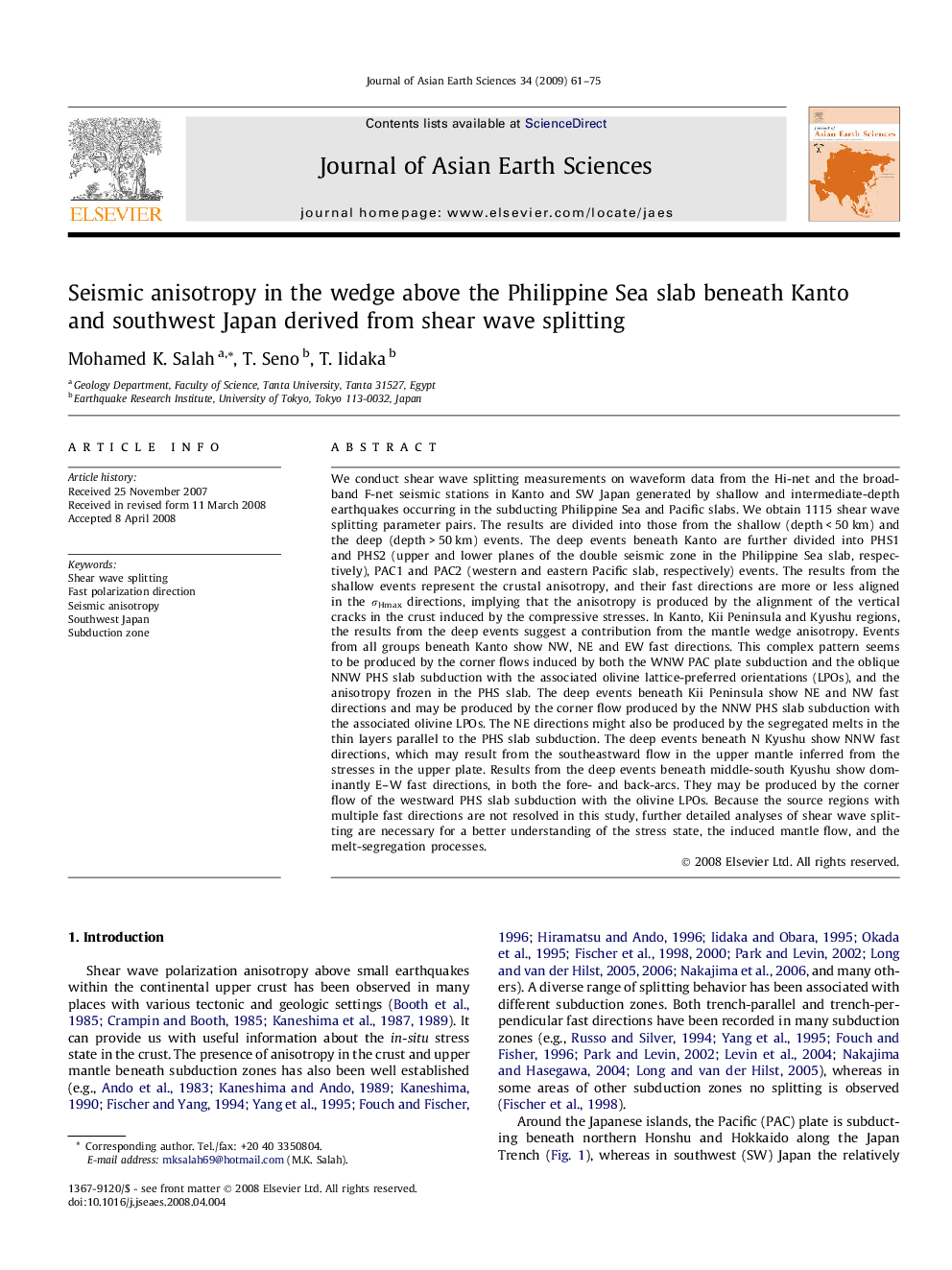| کد مقاله | کد نشریه | سال انتشار | مقاله انگلیسی | نسخه تمام متن |
|---|---|---|---|---|
| 4732220 | 1356850 | 2009 | 15 صفحه PDF | دانلود رایگان |
عنوان انگلیسی مقاله ISI
Seismic anisotropy in the wedge above the Philippine Sea slab beneath Kanto and southwest Japan derived from shear wave splitting
دانلود مقاله + سفارش ترجمه
دانلود مقاله ISI انگلیسی
رایگان برای ایرانیان
کلمات کلیدی
موضوعات مرتبط
مهندسی و علوم پایه
علوم زمین و سیارات
زمین شناسی
پیش نمایش صفحه اول مقاله

چکیده انگلیسی
We conduct shear wave splitting measurements on waveform data from the Hi-net and the broadband F-net seismic stations in Kanto and SW Japan generated by shallow and intermediate-depth earthquakes occurring in the subducting Philippine Sea and Pacific slabs. We obtain 1115 shear wave splitting parameter pairs. The results are divided into those from the shallow (depth < 50 km) and the deep (depth > 50 km) events. The deep events beneath Kanto are further divided into PHS1 and PHS2 (upper and lower planes of the double seismic zone in the Philippine Sea slab, respectively), PAC1 and PAC2 (western and eastern Pacific slab, respectively) events. The results from the shallow events represent the crustal anisotropy, and their fast directions are more or less aligned in the ÏHmax directions, implying that the anisotropy is produced by the alignment of the vertical cracks in the crust induced by the compressive stresses. In Kanto, Kii Peninsula and Kyushu regions, the results from the deep events suggest a contribution from the mantle wedge anisotropy. Events from all groups beneath Kanto show NW, NE and EW fast directions. This complex pattern seems to be produced by the corner flows induced by both the WNW PAC plate subduction and the oblique NNW PHS slab subduction with the associated olivine lattice-preferred orientations (LPOs), and the anisotropy frozen in the PHS slab. The deep events beneath Kii Peninsula show NE and NW fast directions and may be produced by the corner flow produced by the NNW PHS slab subduction with the associated olivine LPOs. The NE directions might also be produced by the segregated melts in the thin layers parallel to the PHS slab subduction. The deep events beneath N Kyushu show NNW fast directions, which may result from the southeastward flow in the upper mantle inferred from the stresses in the upper plate. Results from the deep events beneath middle-south Kyushu show dominantly E-W fast directions, in both the fore- and back-arcs. They may be produced by the corner flow of the westward PHS slab subduction with the olivine LPOs. Because the source regions with multiple fast directions are not resolved in this study, further detailed analyses of shear wave splitting are necessary for a better understanding of the stress state, the induced mantle flow, and the melt-segregation processes.
ناشر
Database: Elsevier - ScienceDirect (ساینس دایرکت)
Journal: Journal of Asian Earth Sciences - Volume 34, Issue 1, 5 January 2009, Pages 61-75
Journal: Journal of Asian Earth Sciences - Volume 34, Issue 1, 5 January 2009, Pages 61-75
نویسندگان
Mohamed K. Salah, T. Seno, T. Iidaka,